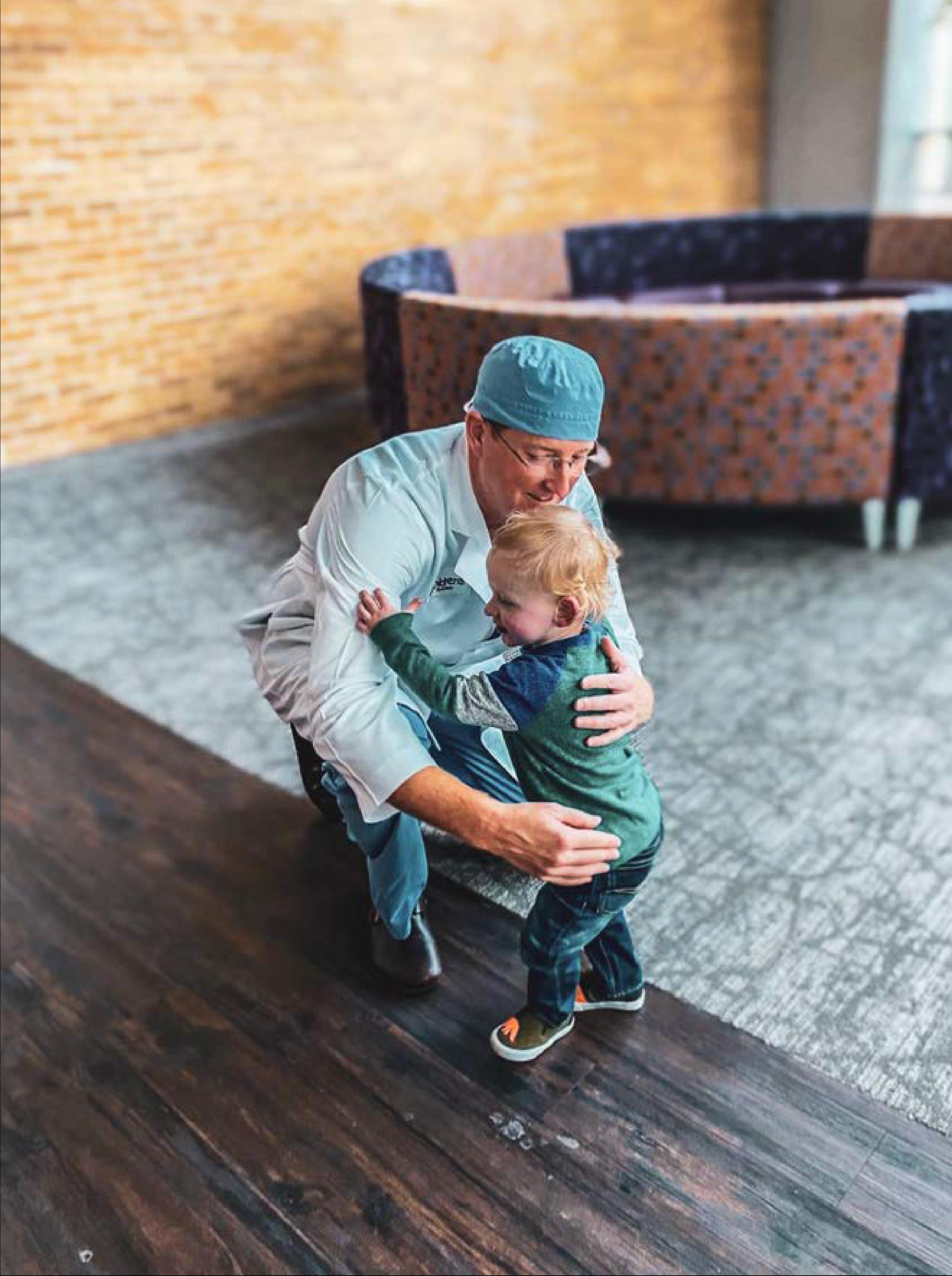




For more information and helpful resources, visit our website at www.oumedicine.com/childrensheartcenter
There, you can find links and resources under Patient and Family Support. The Children’s Heart Center team may provide you with a personalized heart diagram in the back of this folder.























On behalf of Oklahoma Children’s OU Health and our pediatric cardiothoracic surgery team, we want to welcome you. The diagnosis of a heart condition in a child is a frightening experience for any family. We thank you for your trust in us to deliver the best possible care for your loved one.
Our pediatric cardiothoracic surgery program is the first and only comprehensive cardiac surgical program in Oklahoma. Our surgical results are among the best in the country and we are recognized by U.S. News and World Report as a top cardiology and heart surgery program.
As the state’s premier pediatric heart team — with more than 150 highly specialized staff members in multiple complementary disciplines — we offer the most comprehensive methods in the state to identify and correct a broad range of heart conditions for children and adults.
Our forward-thinking approach to care and treatment means that we employ innovative technology and progressive techniques to better serve our patients. Our experience allows us to push the boundaries of possibility to achieve impressive outcomes, performing over 500 operations each year. We are devoted to caring for the smallest hearts and the most complex congenital heart cases.
We thank you for your trust in our team.
Sincerely,
Harold Burkhart, M.D.
Professor and Chief, Department of Surgery, Division of Cardiac, Thoracic and Vascular Surgery
Paul H. and Doris Eaton Travis Chair in Thoracic Surgery
Children’s Hospital Foundation/Brandon Weeden Endowed Chair in Pediatric Cardiac Surgery Director of Pediatric Cardiovascular Surgery, University of Oklahoma College of Medicine
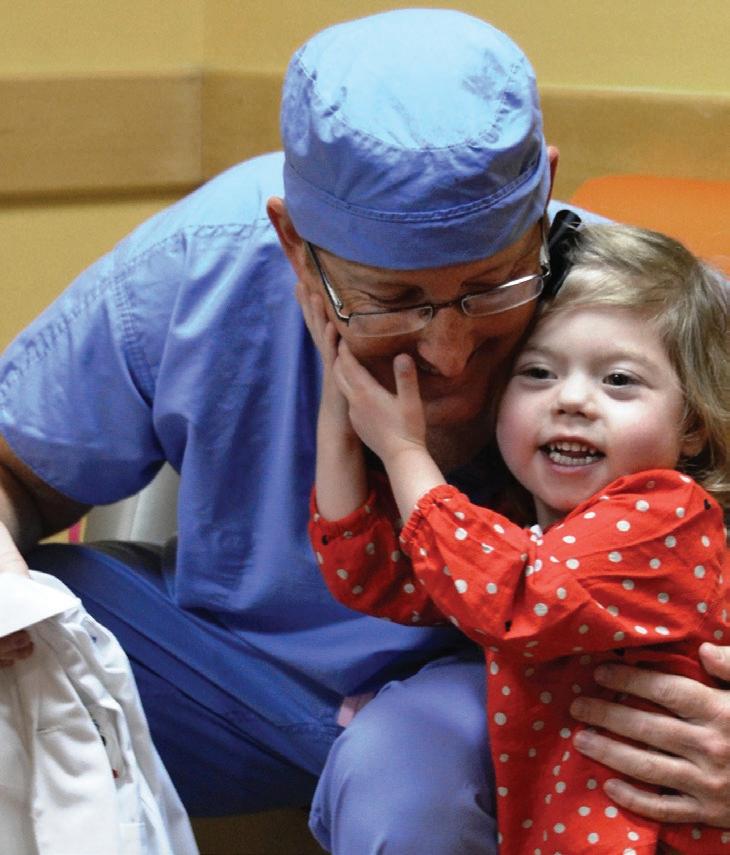
Your child is scheduled for heart surgery at Oklahoma Children’s Hospital. This booklet will answer common questions you may have about heart surgery.
Remember, you are the most important support person for your child. Parents play an important role in helping children have a positive surgical experience. Talk, listen and reassure your child. Be honest. Tours of the hospital are available through the Child Life Department at (405) 271-6543. A child life specialist will help prepare you and your child through developmentally appropriate medical teaching.


You may park in garage P2 on the west side of Oklahoma Children’s Hospital and enter through the atrium. The parking entrance is on the east side of Children’s Avenue, between NE 13th Street and Stanton L. Young Boulevard. You may also valet park for free or self-park in the garage. Parking for parents of patients can be validated in the outpatient surgery registration area. All other parking for visitors is $1 per half hour, up to $5 per day. After parking, enter through the main atrium entrance. This entrance is open 24 hours a day and is on the second floor of Oklahoma Children’s Hospital. You must check in with the security officer in the atrium from 9 p.m. – 6 a.m. After you enter the atrium, go to your left toward the pharmacy, behind the large statue of the two children skipping rope. To the left of the gift shop are two double doors that will take you into the hospital. Take elevator L just behind the double doors up to the third floor. Exit the elevators to your left, and follow the train mural on the wall to outpatient registration.
Children’s Outpatient Surgery/Preoperative Clinic is located at 3K on the third floor of Oklahoma Children’s Hospital, 1200 Childrens Ave. Oklahoma City, OK 73104


By now, you should have received a call to schedule your child’s pre-operative appointments and surgical date. Details will be outlined on the insert located in the front pocket of this folder, provided by the surgery scheduling team. If you have any questions about any of the listed appointments, please contact the pediatric cardiothoracic surgery scheduling office at (405) 271-4631 and we will be happy to assist you.
The preoperative day is normally the business day prior to your scheduled surgery date. Please refer to your surgery appointment letter insert for the dates, times, and locations for these appointments. If your cardiologist has requested additional tests, imaging, or appointments, those will not be listed on this insert. If you have questions about appointments not listed, please contact the Heart Center Clinic at (405) 271-5530 to inquire.
• All patients are required to have a chest x-ray on pre-op day.
• Outpatient Surgery pre-operative appointment:
• Bring verification of insurance card and a form of ID.
• The anesthesia physician assistants will meet with you to discuss the anesthesia plan for your surgery. The preoperative nurses will complete lab work and review NPO guidelines.
• A pediatric cardiothoracic surgery Nurse Practitioner will meet with you to assess your child, speak with you about the surgery, and prepare you for how your day of surgery will go.
• Watch our preoperative video and share our interactive online booklet (Goodbye Fear) with your child. Links to this and a host of other helpful and fun resources can be found when you search Goodbye Fears on the Oklahoma Children’s Hospital website at https://www.ouhealth.com/ oklahoma-childrens-hospital.
• Patients under the age of 18 MUST have a parent or legal guardian sign the consent form and remain throughout surgery.
• It is important to note, if you are not the birth or adoptive parent of the child receiving surgery, written verification of guardianship must be provided to give consent for surgery.
• If your child is in DHS custody, a judge may have to provide a judge ordered consent. Our outpatient social worker will work with your DHS case worker to complete this process. Please contact the outpatient social worker in The Heart Center clinic to discuss.
• It is important to follow diet guidelines prior to surgery. Your surgeon may alter these guidelines for specific surgeries. If diet guidelines are not followed, surgery can be canceled.
• If your child is under 6 years old:
• No solid food after midnight.
• Your child may have clear liquids up to 4 a.m. (water, Sprite, Gatorade, and Pedialyte).
• Instructions will be given specifically for formula, breast milk and milk products.
• Do not give citrus juices containing pulp.
• Your child’s health care team will make an evaluation upon arrival on whether your child will be able to eat or drink anything before surgery.
• Children may wear pajamas and bring a favorite toy, stuffed animal or blanket.
• If your child is taking medication, be sure to check with your child’s doctor to see if the medication needs to be taken before surgery. If your child takes medication each day, bring the medication with you on the day of surgery.
• Bring a list of all medications and the dosages — this will be helpful to the anesthesiologist when deciding which medications should be taken the morning of surgery.
• If your child becomes ill with a runny nose, fever, cough or vomiting prior to your scheduled surgery, call The Heart Center Clinic or pediatric cardiothoracic surgery for further instructions.
• Have your child take a bath or shower with the special soap provided to you, and shampoo his or her hair prior to arrival for surgery.
• Brush teeth the morning of surgery — do not allow your child to swallow the toothpaste or water.
• Do not let your child wear makeup, nail polish, hair pins or jewelry including body piercings.
• If your child wears glasses, they may wear them to the hospital the day of surgery.
Financial counseling and arrangements are necessary prior to surgery. For your billing convenience:
• You will be asked to pay deductibles and estimated coinsurance prior to surgery.
• We will bill your insurance company as a courtesy. Oklahoma Children’s Hospital cannot accept responsibility for collecting insurance claims or for negotiating settlements on disputed claims. You are responsible for any balance due.
• Payment will be requested from you unless your insurance company pays within 60 days.
• We will cooperate with third-party carriers when handling questions about your claim.
• We will provide you with status reports regarding your account, in the form of monthly statements, until the account is paid in full.
• We accept Visa, Discover, American Express and MasterCard for payment.
• In the event of any overpayment, you will promptly be refunded the amount of the overpayment.
• Our goal is to have your account cleared in a timely manner that is satisfactory to you. If you should have any questions regarding payment information, please call (405) 271-4225, Monday through Friday, between 9 a.m. and 4 p.m.
You can find Outpatient Surgery on the third floor of Oklahoma Children’s Hospital (3K).
• On the day of surgery, you will have a private waiting room to relax. Your child’s operating room nurse will be sure to keep you updated throughout the surgery.
• Bring verification of insurance card and a form of ID.
• If you are not the birth or adoptive parents, written verification of guardianship must be provided to sign for surgery.
• Your child will require your full attention. Please avoid bringing other children with you the day of surgery. Childcare arrangements should be made in advance.
• We ask that ONLY the patient and parents/caregivers be in the outpatient waiting area. All other family members are welcome to wait in the surgery waiting area.
• Because our surgical patients are not allowed to eat or drink prior to surgery, we ask that no food or drink be brought into the outpatient area. Eating and drinking are allowed in the surgery waiting area across from the outpatient registration.
• Have your child wear comfortable clothing the day of surgery. Think ahead on how he or she will dress following surgery.
A child life specialist will meet with you to provide preparation for your child and your family for the surgery and hospitalization. They are trained to help children adjust to hospitalization and work with the staff to ensure that your child receives the absolute best care possible.
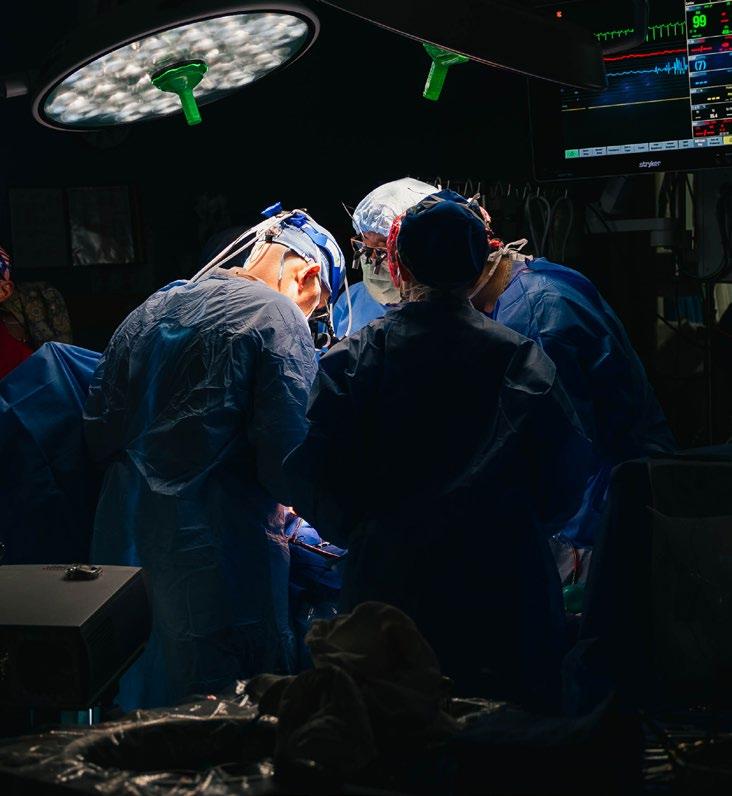
An anesthesiologist will visit you to discuss the kind of anesthesia they plan to use. The anesthetic technique used is determined by many factors, so please feel free to ask questions. If your child receives general anesthesia, he or she may be able to get out of bed the day of surgery or the next morning, but only with assistance. Please don’t allow your child to get up without staff present until we inform you it is OK.
Patient Identification
To help ensure correct patient identification, your child’s arm band will be checked and you will be asked to verify your child’s name, birthday and the procedure that he or she is having performed. This information will be asked frequently by all care providers. This is for your child’s safety.
Marking the Surgical Site
Correct surgical site is very important. Before your surgery, the physician will mark your child’s surgical site. This is another step that we take to ensure safety.
Time Out
After your child is asleep and before an incision is made, the entire operating room team, including surgeon, anesthesia, RN, surgical assistant and surgical technologist will stop everything and re-verify your identification, observe any surgical site markings, and then re-verify these surgical site markings along with the surgical procedure.
• Once the surgery is complete, Dr. Burkhart will come to the waiting room to discuss the surgery with you.
• We have two Cardiovascular Intensive Care Units (CICU); one located on the eighth floor and one located on the ninth floor. Our care team will take your child to one of those locations.
• There is a waiting room located outside of each of those units.
• Please allow the nurses about one to two hours to get your child settled in the CICU.
• The nurse will come to the CICU waiting room to get you or call you when they are ready for you to come back to be with your child.
• Your child may have an endotracheal tube (ET tube) in their mouth or nose to help with their breathing by keeping their airway open. This ET tube is attached to a ventilator machine that can precisely regulate the amount of oxygen and how often your child takes a breath. Your child will be asleep while on this ventilator machine.
• Your child will have one or two tubes coming from their chest. These chest tubes are inserted into your child’s chest to help drain excess fluid from around their heart.
• Your child will have a central venous line in their neck (IJ line) or groin. This is a device that allows the medical staff to give your child medicines and monitor the pressure in your child’s heart.
• Your child will have an arterial line (art-line) in their wrist or groin. An arterial line is a thin catheter inserted into an artery. It is used to monitor the blood pressure and to obtain blood samples for laboratory studies.
• Your child will have gauze and tape on their chest covering the incision site. Under the tape are steristrips covering the incision.
• Your child may have one or more intravenous catheters (IVs). An IV is a small catheter inserted into a vein. It is used to give your child medicine and to take blood samples.
• Your child will have a Foley catheter. A Foley catheter is a thin, sterile tube inserted into your child’s bladder urethra to their bladder that will help to drain urine.
• Your child may have pacer wires. These special wires may be attached to your child’s heart during the operation. The ends will come out of your child’s chest. If necessary, these wires can be connected to a pacemaker. If they aren’t needed, they’ll be taken out a few days after surgery.
• Each day more and more tubes and machines will be removed until there aren’t any left and it will be time to go home.
• Your child will have near-infrared spectroscopy (NIRS) monitors on his or her forehead. These measure the blood flow from the heart to the brain.

Oklahoma Children’s Hospital is concerned about your child’s health and well-being. We have developed a pain management program to ensure adequate relief from pain.
When pain is controlled, the patient becomes a partner in his or her care and comfort. Pain is a discomfort alerting you to the fact that something is wrong with your body. Unrelieved pain may cause suffering, which can lead to other health problems and delay in recovery. Keeping your child’s pain under control is
important to his or her wellbeing. It will help your child eat better, sleep better, move around more easily and visit with family and friends. We ask patients to rate pain using two types of pain scales. One is a score of 1-10 with 10 being worst pain. The other scale is a Wong Baker FACES Scale.
As a reminder, anesthesia can cause drowsiness and amnesia for up to 24 hours after surgery.
Each morning at 7:30 a.m., (8 a.m. on the weekends), the cardiac team will discuss the plan of care for each patient in the CICU and the neonatal intensive care unit (NICU).
Parents are encouraged to take part in rounds. Please feel free to ask questions during rounds. Remember, you are a very important part of your child’s care.
Q: I see so many doctors. Who is in charge?
A: It is a team effort. The intensive care team, the cardiologists and surgical team are all responsible for your child’s care. The critical care team will be monitoring your child and managing his or her post-operative care. The critical care team is in close contact with the surgical team and will keep the team updated and will contact the team if they have questions.
Q: Who do I ask if I have questions?
A: Your child’s nurse is a great resource and can answer many of your questions. You can always bring up questions during rounds. It is a good idea to write down any questions you have so you don’t forget.
Q: Where do I go to shower, check emails, or find something to eat?
A: The Ronald McDonald Family Room is located on the sixth floor of Oklahoma Children’s Hospital. There are shower rooms, a television, snacks, laundry facilites, and computers available to all of the caregivers of our hospitalized children.
We’re here to support you and your child every step of the way. Our team is committed to providing the highest quality care and compassionate service to all patients and families.
To help make your stay as smooth as possible, we’ve gathered important information about our unit. Please take a moment to review it.
Thank you for trusting us with your child’s care. We’re honored to be part of your journey toward healing.
Location
The CICU is on the eighth and ninth floors of Oklahoma Children’s Hospital. Ask any employee with a badge if you get lost. The waiting room is located just outside of the double doors. Please press the button located just outside of the double doors and we will open the doors for you.
Bathrooms/Showers
Bathrooms in the room are only for patient use. Bathrooms for family use are located outside of the unit. You may use the showers in the Ronald McDonald Family Room.
Food
One complimentary guest meal tray may be ordered per patient. Please ask your nurse for a menu. No food or drink is allowed in the rooms other than the patient’s food and drink.
Nursing Mothers
If you need a breast pump, it may be ordered upon request. There is a breast milk freezer and refrigerator available for nursing mothers.
Visitation Policy: Parents and Guardians
The CICU is open to parents and guardians 24 hours a day, seven days a week. One parent may stay in the unit overnight.
Visitors
Visiting hours are from 9 a.m. – 9:30 p.m. During those hours, there may be two (2) people by the patient’s bedside at a time.
Visiting hours for siblings are from 4 – 9 p.m. Siblings must be 6 years or older in order to come into the CICU. Siblings may not spend the night in the unit.
Parking
Please use the visitors parking garage or complimentary valet parking. Ask your nurse or the monitor tech for a parking validation stub.
Infection Prevention
Please do not visit the patient or the family if you are sick. Wash your hands before entering and exiting any patient room to help prevent the spread of germs.
An ATM, bank and post office are located on the third floor of the Children’s atrium.
1200 Childrens Ave. | Oklahoma City, OK 73104
Main phone number: (405) 271-4700
Visiting hours: 9 a.m. to 9:30 p.m.
The main entrance is located on the second floor and is open 24 hours a day. You must check in with the security officer in the atrium from 9 p.m. to 6 a.m.
The NICU is located on the 7th Floor of Oklahoma Children’s Hospital.
Parents are encouraged to be with their infant(s) and to be involved in their care as much as possible. For your baby’s safety, all family and visitors must check in and present photo ID at the NICU greeter desk every time you enter.
Parents may choose up to four adult individuals, 18 years old or older, who may visit without the parents; however, these individuals may not bring additional guests into the unit. These individuals’ names will be on the neonatal guest form. Once completed, the guest form cannot be changed except to remove a name from the list.
For infants born at Oklahoma Children’s Hospital, only the person with the infant bracelet on may see the infant without the parents until the parents have completed their guest form. A parent must accompany all other guests. There may be up to two people per family in the unit at a time.

Infant safety is a high priority in the NICU. The NICU doors are locked at all times. Parents and all guests must sign in at check-in and receive the appropriate stickered label before entering the unit. Prior to leaving, please sign out at the NICU greeter desk.
To reduce the risk of infection, guests other than the infant’s siblings need to be at least 16 years old. Please review the sibling time guidelines in this booklet if you plan to bring the infant’s siblings to the bedside.
We ask that each time anyone comes into the NICU that they remove rings, watches and bracelets, and wash their hands and arms up to the elbows with the special soap at the sink before going into your infant’s room. Hand sanitizer is available at the bedside. Each time you touch your face, cell phone, purse, etc., please use the hand sanitizer before touching your baby.
A Welcome to the NICU book will be provided and staff will be available to answer any additional questions about your baby’s stay in the NICU.
The Zone is located on the 6th Floor of Oklahoma Children’s Hospital.
The Zone is a community-funded 6,000-square-foot play-and-learning haven where patients and siblings can play, explore, learn, socialize and forget their worries. The Zone is staffed by Child Life specialists trained in meeting the psychosocial needs of children in health care settings.
The Zone provides a place for these specialists to work with the children on developmental activities and provide social and emotional support that the children and their families need.
There are video games, books, musical equipment and a host of resource materials available for children and parents. Patients and siblings must be accompanied by an adult to attend. Please ask nursing staff or your child life specialist for information regarding times The Zone is open.
In The Zone TV, Oklahoma Children’s Hospital’s own television station, is on channel 90 on the television and has programming designed specifically for our hospital by the Child Life Department. Live shows are hosted throughout the week. Please ask your child life specialist for more details.
Chaplain Services — (405) 271-5758
The Spiritual Care Department includes full-time staff chaplains and PRN chaplains. They are trained to address a broad range of spiritual needs for you and your family and are accessible 24 hours a day. You may contact them or ask your nurse to page them for you. We also have a chapel available 24 hours a day on the second floor at Oklahoma Children’s. Learn more about our department and the services offered by visiting the website: www.ouhealth.com/spiritualcare.
One caretaker per family is able to order a meal from the patient menu (breakfast, 6:30 a.m. to 10 a.m., lunch, 10:30 a.m. to 3 p.m. and dinner, 3 p.m. to 6:30 p.m.). Your tray will be available in Oklahoma Children’s Hospital Cafeteria for pick up at the door opposite the hot food line, toward the back of the cafeteria. Use this time to enjoy a quiet meal in the cafeteria, as the trays are not allowed in the NICU. Trays take about 30 minutes to be prepared once your order is placed. To order, call (405) 271-4343 (1-4343 from a hospital phone). Check with your baby’s nurse for details.
If you prefer to make your own food choices, you have the option of ordering a Room Service Guest Tray for $7.50 that is charged to a credit/debit card.
Please call 1-4343 at each meal time to request either tray. Trays take about 30-45 minutes to be delivered once your order is placed.
Additional On-Campus Options
Beaker’s Café , in the David L. Boren Student Union, 1106 N Stonewall Ave., (405) 271-3665.
Healthy Hearth , in the OU Health Stephenson Cancer Center, 1st Floor, 800 NE 10th St., (405) 271-1685.
Dunkin Donuts , in the Oklahoma Children’s Hospital, 2nd Floor, 1200 Children’s Ave., (405) 271-3865.
Located just off of the main hospital atrium, the gift shop supplies everything from personal essentials to snacks and a variety of gifts for patients of all ages. The shop is run by hospital volunteers, and all proceeds benefit local nursing students through scholarships. Gift shop hours are 9 a.m. to 5 p.m., Monday through Friday.
As a health care provider, OU Health has a responsibility to promote the health and well-being of its patients, visitors, medical staff and employees. The Surgeon General of the United States has identified tobacco usage as a major public health problem. It is the single-most preventable cause of premature death in the United States. In addition, clinical studies have determined that exposure to second-hand smoke may adversely affect the health of nonsmokers. As health care leaders in our community, our
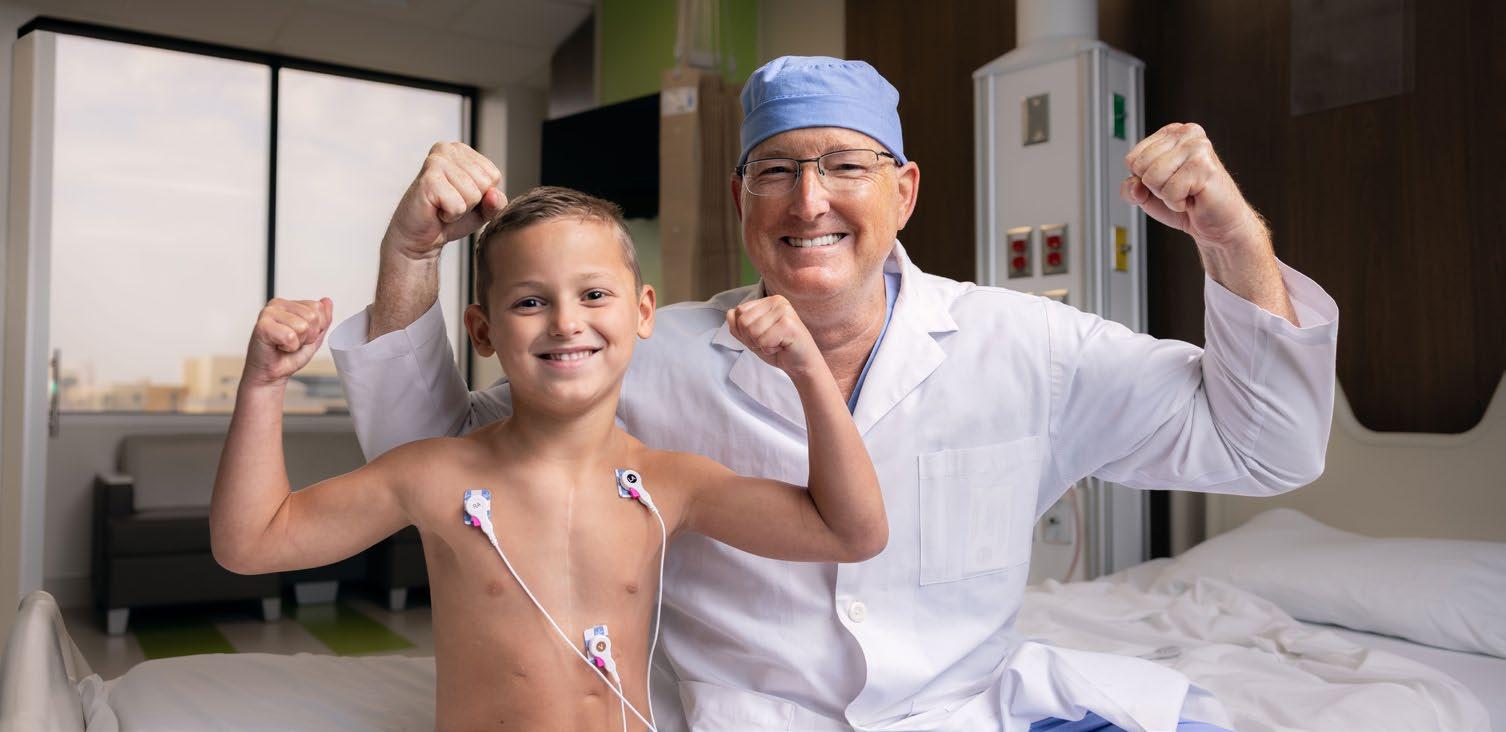
hospitals are committed to providing an environment conducive to healing and free of health hazards for patients, visitors and employees.
OU Health has adopted the following policy: smoking cigarettes, the use of electronic cigarettes and/or the use of tobacco products is not permitted in any OU Health facility, parking structure or on the grounds or campus or operated off-site locations, including public or non-public areas, offices, cafeterias, restrooms, stairwells, driveways, sidewalks and vehicles, with the exception of the 11 specifically designated enclosed booth area is located on the south side of Oklahoma Children’s Hospital directly behind the loading dock area. Smoking is allowed within a personal vehicle.
1 (800) QUIT-NOW (1-800-784-8669) will provide those wishing to stop using tobacco assistance at no cost or you can speak with a certified Tobacco Treatment Specialist by contacting the Heart Center social work coordinator.
Oklahoma Children’s Hospital offers free valet parking during normal business hours and is located in the front of our facility. You may also park in the multilevel underground visitor garage connected to the hospital. The parking garage entrance is located on the east side of Childrens Avenue, between NE 13th Street and Stanton L. Young Boulevard or to the north side of our main entrance directly in front of the hospital.
Parking validation tickets for parents of patients can be obtained in the outpatient surgery area or clinic. All other visitor parking is $1 per half-hour or $5 per day.
There are many options in the Oklahoma City area for shopping, fuel, food, and other needs. Here is a short list of some in close proximity of OU Medicine.
Pharmacies
Oklahoma Children’s Hospital Atrium - Retail
1200 Childrens Ave., Suite 2100 – (405) 271-2156
OU Health Pharmacy
825 NE 10th St. – (405) 271-6446
CVS Pharmacy
715 NW. 50th St. – (405) 521-0996
Walgreens Pharmacy
2345 N Classen Blvd. – (405) 521-0906
Shopping and Grocery
Walmart 1801 Belle Isle Blvd. – (405) 841-6502
Walmart Neighborhood Market 2217 NW 23rd St. – (405) 521-1431
Target 5400 N May Ave. – (405) 947-6761
Homeland 1108 NW 18th St. – (405) 524-4221
Whole Foods
6001 N Western Ave. – (405) 879-3500
Trader Joe’s 6409 Avondale Drive, Nichols Hills – (405) 843-5655
Penn Square Mall I-44 and NW Expressway – (405) 842-4424
Many restaurants in the OKC area have food delivery to our facility. When you request delivery, please meet them in our main lobby only and not patient floors or any patient care areas.
Additional food delivery services in the area include: www.instacart.com
www.grubhub.com
www.doordash.com
www.858togo.com
Gas Stations
Caseys – 125 S Lincoln Blvd.
Phillips 66 – 1117 N Broadway Ave.
OnCue – 1 NW 23rd St.
Lodging
Ronald McDonald House — Hospital Location
Garrison Tower, 3rd and 4th Floors – (405) 271-3180
Please contact your social work cordinator for Ronald McDonald House lodging.
Rooms will be given out on a first-come, first-served basis, and are for families who live more than 25 miles from Oklahoma Children’s Hospital. If a room is available, you will need to check in on the third floor of Garrison Tower. There is a $20 room key deposit and you are expected to spend the majority of your day, at a minimum of six hours per day, with your child in
the hospital. As this lodging resource is provided as a means for you to be with your child in the hospital, you may be asked to check out if it is determined that you are unable to meet the minimum visitation requirement. There is no charge to stay.
There are many area hotels that offer a discount to our patients. Ask your social work coordinator or see the additional insert for other available lodging options in the area.

Health care associated infections may occur as a result from care received in hospitals and other health care facilities. At Oklahoma Children’s Hospital, infection prevention is a top priority.
We use many practices known to prevent and reduce the risk of infections. Sometimes infections may occur as a result of the treatment. We encourage our patients to speak up and ask questions about the care they receive.
As a patient or visitor, there are steps you can take to prevent the spread of infection.
A surgical site infection is an infection that occurs after surgery in the part of the body where the surgery took place. Most patients who have surgery do not develop an infection.
Some of the common symptoms are redness and pain around the surgery area, yellow drainage from the surgical wound and a fever.
Can SSIs be treated?
Yes. Most surgical site infections can be treated with antibiotics. The antibiotic given to you depends on the bacteria (germs) causing the infection. Sometimes patients with SSIs also need another surgery to treat the infection.
To help prevent SSIs, doctors, nurses and other health care providers:
• Clean their hands and arms up to their elbows with a germkilling soap just before and after surgery.
• May remove some of your child’s hair immediately before surgery using electric clippers if the hair is in the same area where the procedure will occur.
• May give special antibiotics before and after surgery for a limited time.
• Wear mask, cap, gown and gloves during surgery.
• Clean the skin at the site of the surgery with a special soap that kills germs. This soap may make the skin appear brown.
• To help decrease your child’s risk for getting an infection following surgery, it is recommended that they bathe or shower the morning of surgery.
• On the night before surgery, it is recommended that you sleep on freshly laundered sheets.
• On the night before surgery, your child should not sleep with pets.
• Tell your physician about any other medical problems your child may have. Health problems such as allergies, diabetes, and obesity can affect your child’s surgery and treatment.
March of Dimes – www.marchofdimes.org Works to prevent birth defects and infant mortality.
Mended Little Hearts – www.mendedhearts.org
Provides hope and support to children, patients and families affected by congenital heart disease.
The Children’s Heart Foundation –www.childrensheartfoundation.org
Focuses on bringing health, hope, and happiness to children affected by congenital heart defects.
“It’s My Heart”
A resource book for patients and families affected by congenital heart defects. In plain, understandable language, it describes of the types of congenital heart defects and acquired pediatric heart conditions.
Little Hearts – www.littlehearts.org
Provides support, education, resources and networking to families affected by congenital heart defects.
Pediatric Congenital Heart Association –www.conqueringchd.org
Linked by Heart – www.sistersbyheart.org
Provides regional and local support and resources to families affected by hypoplastic left heart syndrome. Focuses on conquering congenital heart disease.
CaringBridge – www.caringbridge.org
Provides free, personalized websites that connect families and friends during a health event. They make it easier to share health updates and receive messages of love and support.
Kids With Heart – www.kidswithheart.org
Provides information for parents of children with congenital heart disorders. Their goal is to provide a place to find information about specific disorders and links to support resources.
Adult Congenital Heart Association –www.achaheart.org
Empowers the congenital heart disease community by advancing access to resources and specialized care that improve patient-centered outcomes.
Patient Advocate Foundation –www.patientadvocate.org
Helps families locate resources to support cost of living expenses while in treatment, evaluate and maintain health insurance coverage and better manage or reduce the out-of-pocket medical debt associated with their illness.
The Ease App – Available For Android & iPhone
Lets you can stay up to date on surgery day and can invite family and friends to access updates. Additional information will be provided the day of surgery. Ask your surgery team if you have any questions.
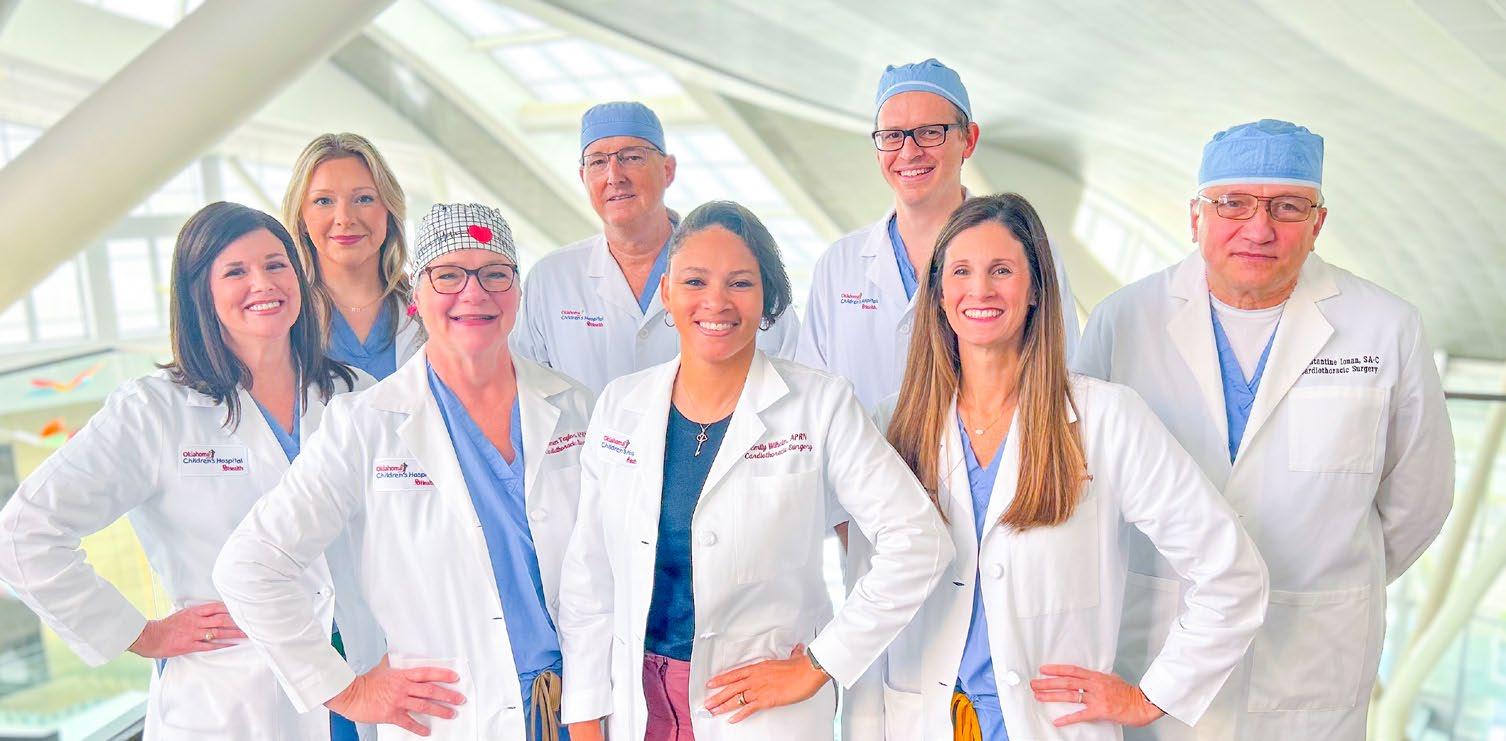
Arrhythmia Ablation
This is a catheterization procedure. It is done to locate and then destroy the source of an irregular heart rate.
Chest X-ray
A chest X-ray is a noninvasive test. It provides pictures of structures in the chest such as the heart, lungs, ribs and bones. It also provides information on the size and position of the heart. It is used to check the position or placement of chest tubes, central lines or nasogastric tubes.
CT Scan
A CT scan is a study that shows cross-sectional pictures of the body. The CT scan shows in great detail the internal structures and any abnormalities. Some CT scans need contrast given orally or by IV.
This is an invasive procedure. A tube or catheter is inserted into a vein in the neck or leg. The tube is then moved up into the heart. A contrast dye is injected. Pictures are taken of the heart chambers, blood vessels and valves under fluoroscopy. Pressures and oxygen saturations can also be measured. This procedure is performed before the bi-directional Glenn and Fontan. Your baby will come to the hospital the morning of procedure. Your baby will receive anesthesia for the procedure. The baby will stay in the recovery room for a period of time and either be discharged home the same day or spend one night.
Echocardiogram
This is a noninvasive test. This test uses ultrasound to provide a picture from the sounds waves that are reflected from an organ or tissue. A transducer is placed over the chest. Highfrequency sound waves bounce off the heart structures. They are transmitted back through the transducer to produce images of the heart structure and heart function.
Electrocardiogram (ECG)
An ECG is a noninvasive test. Electrodes are placed on the arms, legs and chest. A graphic tracing of the electrical activity of the heart is produced.
Holter Monitor
This study continuously watches the electrical activity of the heart. Logbooks document any symptoms and activities. These are then matched with ECG tracings.
Interventional Catheterization
• Catheter devices: A stent is a small wire mesh tube. It is most often made of stainless steel. It can be placed in a narrowed blood vessel.
• Balloon septostomy: removal or cutting of the atrial septum.
• Coil closure of collaterals: coils/device placed in blood vessels to occlude blood flow.
• Angioplasty: dilating or increasing size of blood vessels typically with use of a balloon.
An MRI is a test using non-X-ray magnetic waves to form cross-sectional pictures. This test is similar to a CT scan but without radiation. This test may also require contrast. Newborns and small infants may require anesthesia for this due to study length.
A MRI cannot be done in patients with pacemakers, mechanical prosthetic valves or other medically implanted devices.
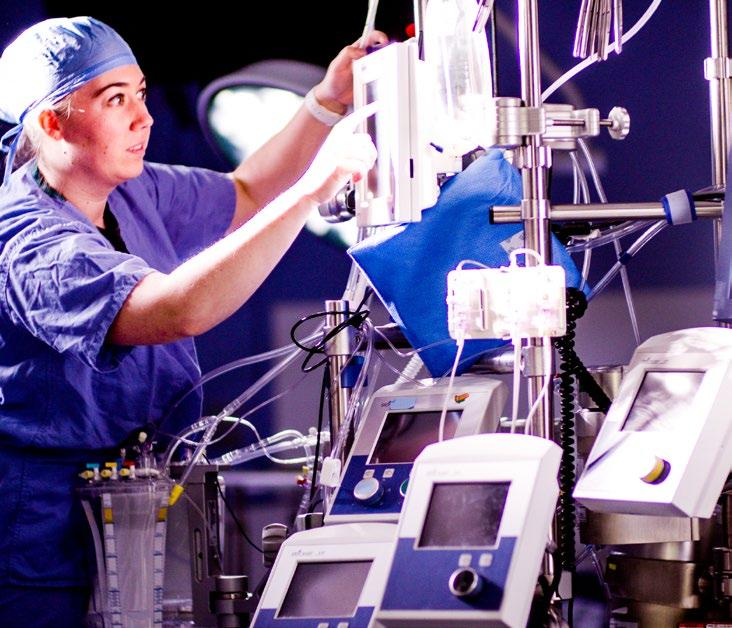
ACE stands for angiotensin converting enzyme inhibitors. These medications work to stop the constriction of blood vessels and decrease the resistance to blood flow. With this, it is much easier for the blood to flow through the body’s organs. It also works to decrease blood pressure.
Possible side effects of ACE inhibitors include:
• Dry persistent cough.
• Weakness or swelling.
• Low blood pressure and dizziness.
This group of medications is used to reduce the formation of clots in the blood stream. Anticoagulants are used:
• To reduce the risk of clot formation in artificial grafts (an example is a BT shunt).
• To decrease the risk of clot formation secondary to blood staying still secondary to poor contractility of hearts or poor pumping hearts.
Additional information about anticoagulants:
• It is important when taking anticoagulation medication to schedule regular blood tests. The goal is to make sure your baby’s blood is within the target range. Examples of medications requiring this blood work are Coumadin and Lovenox.
• It is important to take anticoagulation medicine at the same time each day.
• Many medicines have interactions with anticoagulants. You will need to consult your cardiologist or PCP with additional questions. Patients also need to stop or hold these medicines prior to dental or surgical procedures.
There are many different types of drugs that are used to treat irregular heartbeats.
• Amiodarone works to suppress abnormal signal formation and conduction in the heart. It is important to have thyroid testing and liver function tests while taking this medication.
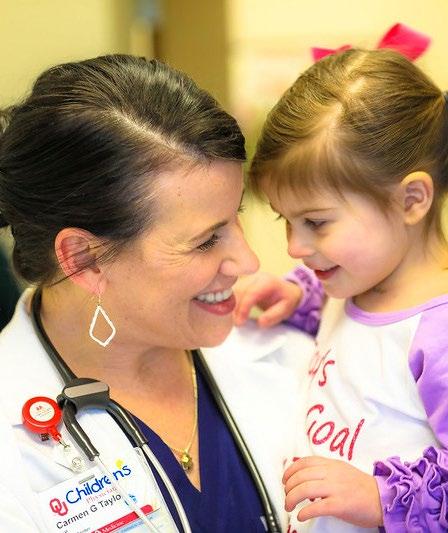
• Beta-blockers are used to treat arrhythmias. They increase the nonexcitable or refractory period of the AV node.
• Calcium channel blockers decrease the calcium influx in the cell. This slows conduction through the heart.
• Digoxin causes the heart to slow and pump blood more effectively. It increases the force of each contraction of the heart. It may also be used to treat rapid heart rates by increasing the parasympathetic nervous system. It decreases excess catecholamine activity produced by heart failure. Take Digoxin at the same time each day. There can be a risk of toxicity, though is very low in infants. If you miss one dose of Digoxin it should not be redosed.
This group of medicines works to stimulate the kidneys. Diuretics remove excess water and salt from the body and increase urine output. Different diuretics work on different parts of the kidney. It is important to call your cardiologist if you have diarrhea or vomiting while taking diuretics. With both there is an increased risk of dehydration.
A doctor who has completed residency and practices medicine in a clinic or hospital, in the specialty learned during residency. An attending physician can supervise fellows, residents and medical students.
Professionals who work with staff to ensure that your child receives the best care possible. They are trained to help children adjust to hospitalization.
A doctor who has completed medical school and a residency program and is now completing a specialty training program.
Medical Social Worker
Medical social workers have a graduate degree and work with patients and their families in need of psychosocial help. They help patients and families by connecting them to necessary resources and supports in the community. They also provide supportive counseling, grief counseling and help patients to expand and strengthen their network of social supports.
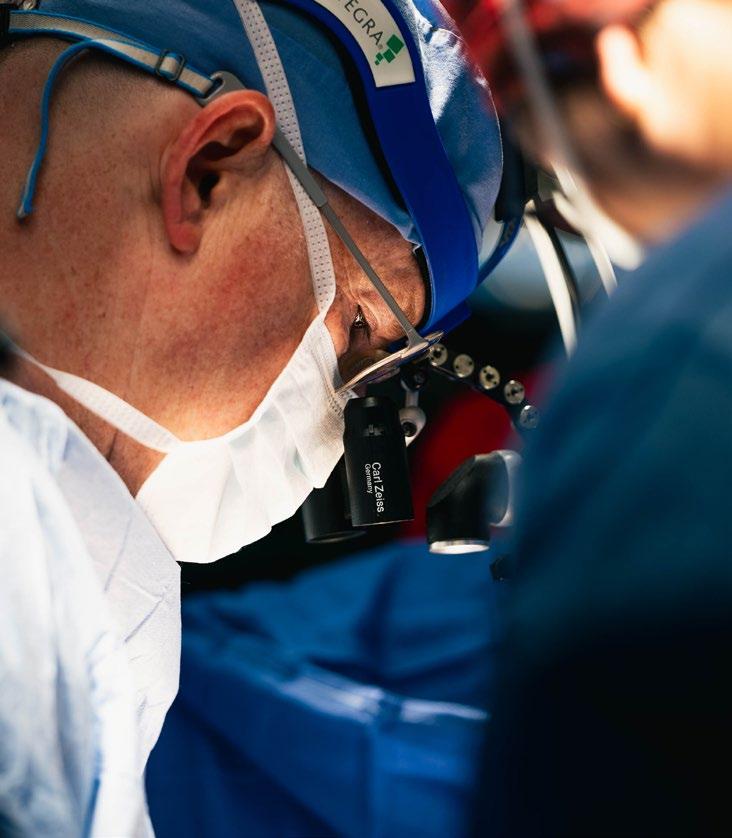
Medical Student
A health care provider who has completed an undergraduate degree and is currently enrolled in a medical school program.
Nurse Practitioner (NP)
A registered nurse who has completed specific advanced nursing education and earned a master’s degree. An NP is considered a mid-level practitioner who is able to write prescriptions and orders.
Health care workers who assist nursing staff with obtaining EKGs, drawing blood, transporting patients, bathing patients and many other nursing tasks.
Pharmacists assist and advise the critical care team on the selection, dosages, interactions and side effects of medications, as well as monitor the health and progress of those patients to ensure that they are using their medications safely and effectively.
A health care provider who has completed a master’s degree in physician assistant studies. A PA is considered a mid-level practitioner who is able to write prescriptions and orders, while also assisting in the operating room.
Registered Dietitian (RD)
A dietitian is an expert in food and nutrition. A dietitian may provide specific artificial nutritional needs to patients unable to eat normally. They provide dietary modifications to address medical issues involving all dietary intake.
Registered Nurse (RN)
Registered nurses are a major part of the of the critical care team. They are responsible for the bedside care, administering prescribed medications and educating patients and their families.
Resident Physician
A doctor who has completed medical school and has received a medical degree and is now specializing in a specific field of medicine.
Respiratory Therapist (RT)
Respiratory therapists care for patients by administering aerosolized drugs, suctioning, management of respiratory components of ventilation machines, management of tracheostomies and drawing of arterial blood gas samples.
Arterial Line (Art-Line or A-Line)
Things An arterial line is a thin catheter (tube) inserted into an artery. It is used to monitor the blood pressure and to obtain blood samples for laboratory studies.
Catheter
A catheter is a tube that can be inserted into a body cavity (bladder, chest) or vessel (vein or artery). Catheters allow drainage or injection of fluids. There are many different types of catheters.
Chest Tube
A tube surgically inserted into your child’s chest. This tube helps to drain fluid from around your child’s heart.
Echocardiogram (ECHO)
An ultrasound machine that takes pictures of the heart. It is used to help doctors check the different areas of the heart and how well it is working.
Endotracheal Tube (ET Tube)
A tube placed in the mouth to help your child breathe. The ET tube is attached to a ventilator machine.
Foley Catheter
A Foley catheter is a thin, sterile tube inserted into your child’s bladder to drain urine.
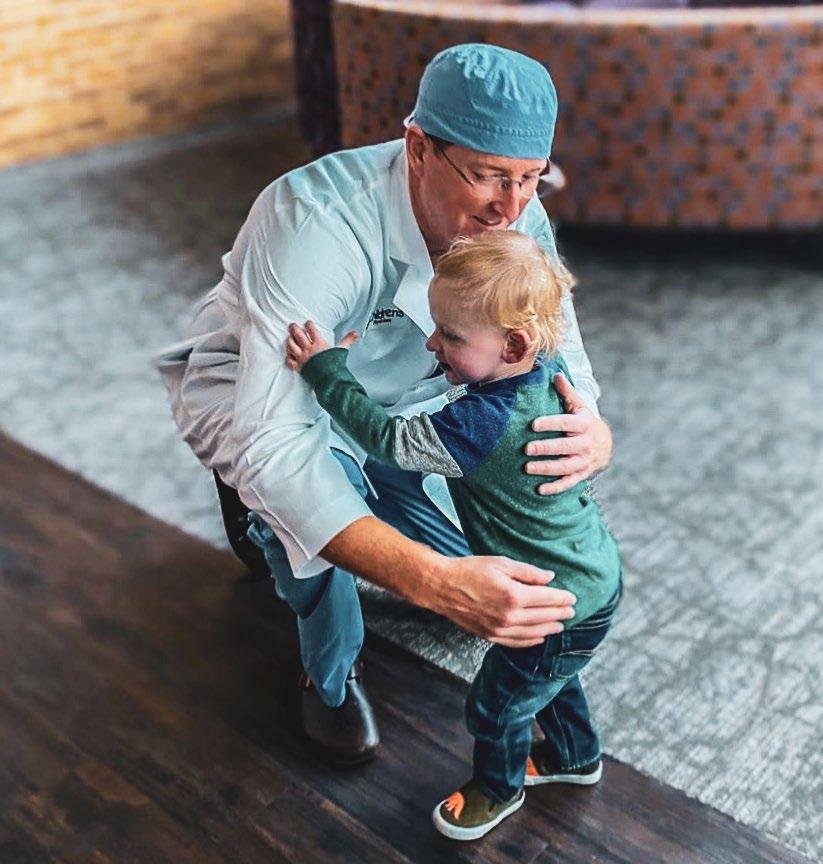
Intravenous Catheters (IV)
An IV is a small catheter inserted into a vein. It is used to give your child medicine and to take blood samples.
Nasogastric Tube (NG Tube)
A plastic tube inserted through the nose, past the throat, and down into the stomach. NG tubes are used for feeding and for giving some medicines.
Pacer Wire
These special wires may be attached to your child’s heart during the operation. If necessary, they can be connected to a pacemaker. If they aren’t needed, they’ll be taken out a few days after surgery.
Pulse Oximeter (Pulse Ox)
A medical device that measures the oxygen saturation of a patient’s blood.
Sutures (Stitches)
This is the operation site.
Internal Jugular Central Venous Line (IJ Line) Incision Site
A catheter placed in the neck. This is a device that allows the medical staff to give your child medicines and monitor the pressure in your child’s heart.
Sutures are used by surgeons to hold tissue together.
Ventilator (Vent)
A machine that can precisely regulate the amount of oxygen and how often your child takes a breath. Your child will still be asleep as long as they are on the ventilator machine..

The normal heart is a muscular pump consisting of four chambers. The two upper chambers, the right and left atria, receive blood returning from the body and lungs. The two lower chambers, the right and left ventricles, are the pumping chambers of the heart. The right ventricle is a low-pressure pump that pushes blood through the lungs, while the left ventricle is a high-pressure pump that pushes blood through the body. The dividing wall between right and left sides of the heart is called the septum.
The systemic (body) veins, also known as the vena cava carry “blue” blood from the body back to the right atrium. This blood has a dark or bluish color because the body tissues have used up its oxygen. The blue blood goes from the right atrium to the right ventricle and is pumped through the pulmonary arteries to the lungs. In the lungs the blood picks up oxygen and releases carbon dioxide and takes on a red color. This red oxygenated blood returns to the left atrium through the pulmonary veins. From the left atrium the blood travels to the left ventricle and is pumped through the aorta to the body, providing oxygen for the body tissues.
The heart has its own electrical system that regulates how fast the heart beats. The electrical impulses begin in an area of the heart called the sinoatrial node (SA node), which starts the heart beat. This impulse travels through the atria to a pathway down to the ventricles causing the chambers to beat sequentially.
